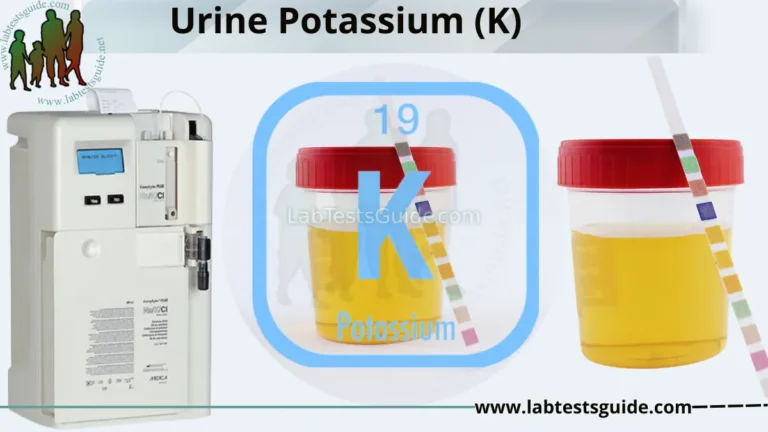Peritoneal fluid is a clear, pale-yellow fluid that is found in the peritoneal cavity, which is the space between the lining of the abdominal cavity (the peritoneum) and the abdominal organs. This fluid acts as a lubricant to reduce friction between the organs, allowing them to move smoothly within the abdominal cavity.

Definition of Peritoneal Fluid:
Peritoneal fluid is a clear, pale-yellow fluid that is found in the peritoneal cavity, which is the space between the lining of the abdominal cavity and the abdominal organs.
Function of Peritoneal Fluid:
The functions of peritoneal fluid include:
- Lubricating the abdominal organs and reducing friction between them
- Providing a medium for the exchange of nutrients, electrolytes, and waste products between the organs and the bloodstream
- Helping to maintain the pH balance of the abdominal cavity
- Acting as a protective cushion against physical trauma or injury to the organs
- Aiding in the immune response by transporting white blood cells and antibodies to sites of infection or inflammation in the abdominal cavity.
Composition of Peritoneal Fluid:
The composition of peritoneal fluid can vary depending on a person’s health status and other factors. However, in general, peritoneal fluid contains:
- Water
- Electrolytes, such as sodium, potassium, and chloride
- Glucose
- Enzymes, such as amylase and lipase
- Proteins, including albumin, globulins, and fibrinogen
- Immunoglobulins, such as IgG and IgA
- White blood cells, including lymphocytes, neutrophils, and macrophages
- Waste products, such as urea and creatinine.
Causes of increased peritoneal fluid:
Here is a list of the causes of increased peritoneal fluid, along with brief explanations:
- Liver disease: Liver disease such as cirrhosis or hepatitis can cause fluid to accumulate in the peritoneal cavity.
- Heart failure: Heart failure can cause a buildup of fluid in the body, including in the peritoneal cavity.
- Kidney disease: Kidney disease can cause fluid retention, leading to an increase in peritoneal fluid.
- Cancer: Certain cancers such as ovarian, liver, pancreatic, and colon cancer can cause an increase in peritoneal fluid.
- Infections: Infections such as peritonitis or tuberculosis can cause an increase in peritoneal fluid.
- Inflammatory bowel disease: Inflammatory bowel disease such as Crohn’s disease or ulcerative colitis can cause an increase in peritoneal fluid.
- Pancreatitis: Pancreatitis can cause inflammation and fluid buildup in the peritoneal cavity.
- Abdominal trauma: Trauma to the abdomen can cause an increase in peritoneal fluid.
- Malnutrition or protein deficiency: Malnutrition or protein deficiency can cause an imbalance in fluid distribution in the body, leading to an increase in peritoneal fluid.
- Hypothyroidism: Hypothyroidism can cause a decrease in metabolic rate and a buildup of fluid in the body, including in the peritoneal cavity.
Diagnosis and Treatment of Excess Peritoneal Fluid:
Diagnosis and treatment of excess peritoneal fluid (ascites) may include:
- Physical examination: A doctor may perform a physical exam to check for abdominal swelling or tenderness.
- Imaging tests: Imaging tests such as ultrasound, CT scan, or MRI can help identify the presence and amount of excess fluid in the peritoneal cavity.
- Blood tests: Blood tests can help determine the underlying cause of excess fluid, such as liver or kidney disease.
- Paracentesis: Paracentesis is a procedure in which a needle is inserted into the peritoneal cavity to drain excess fluid. The fluid can be analyzed to help diagnose the underlying cause of ascites.
- Medications: Depending on the underlying cause of ascites, medications such as diuretics or antibiotics may be prescribed.
- Surgery: In some cases, surgery may be necessary to remove excess fluid or repair the underlying cause of ascites.
- Lifestyle changes: Lifestyle changes such as reducing salt intake and avoiding alcohol may be recommended to help manage ascites.
It is important to note that treatment of excess peritoneal fluid will depend on the underlying cause and severity of the condition, and should be managed under the guidance of a healthcare professional.
Pre Test Preparation:
There are no specific pre-test preparations required for a peritoneal fluid test. However, it is important to inform your healthcare provider about any medications you are taking, as some medications can affect the results of the test. Additionally, it may be helpful to wear loose, comfortable clothing to your appointment to make it easier for the healthcare provider to access your abdomen during the procedure. If you have any questions or concerns about the test, it is recommended that you speak with your healthcare provider.
Required Sample:
The required sample for a peritoneal fluid test is the peritoneal fluid itself. The fluid is obtained through a procedure called paracentesis, which involves inserting a needle through the abdominal wall and into the peritoneal cavity to collect a sample of the fluid. The sample is then sent to a laboratory for analysis to help diagnose underlying conditions or diseases that may be affecting the peritoneal cavity. The procedure is usually performed under local anesthesia and ultrasound guidance to ensure accuracy and safety.
Tests to be performed:
Here is a list of some of the tests that may be performed on a sample of peritoneal fluid:
- Cell count: A cell count can help identify the presence of white blood cells, red blood cells, and other cells in the peritoneal fluid, which can indicate the presence of infection or inflammation.
- Chemistry panel: A chemistry panel can measure the levels of various chemicals in the peritoneal fluid, including electrolytes, glucose, and protein. Abnormal levels may indicate a health problem.
- Culture and sensitivity: A culture and sensitivity test can identify the presence of bacteria or other microorganisms in the peritoneal fluid and determine which antibiotics would be most effective in treating an infection.
- Cytology: A cytology test can examine the cells in the peritoneal fluid for the presence of cancer cells or other abnormal cells.
- Amylase and Lipase: These enzymes can indicate the presence of pancreatitis or other pancreatic disorders.
- Lactate dehydrogenase (LDH): High levels of LDH may indicate the presence of cancer or other diseases.
- Total protein and albumin: These tests can help determine if there is a protein imbalance in the peritoneal fluid, which may be related to liver or kidney disease.
The specific tests performed may vary depending on the reason for the test and the healthcare provider’s assessment of the patient’s condition.
Why get tested:
Here are some reasons why a healthcare provider may recommend getting a peritoneal fluid test:
- To diagnose the cause of abdominal pain or swelling: Excess fluid in the peritoneal cavity (ascites) can cause abdominal pain or swelling. A peritoneal fluid test can help identify the underlying cause of the ascites, such as liver or kidney disease.
- To monitor the progression of a disease: A peritoneal fluid test can be used to monitor the progression of certain diseases, such as cancer, and to evaluate the effectiveness of treatment.
- To diagnose an infection: A peritoneal fluid test can help identify the presence of bacteria or other microorganisms in the peritoneal cavity, which can indicate an infection.
- To diagnose a pancreatic disorder: Elevated levels of amylase and lipase enzymes in the peritoneal fluid may indicate the presence of pancreatitis or other pancreatic disorders.
- To diagnose a cancer: A cytology test on the peritoneal fluid can help identify the presence of cancer cells, which may indicate the spread of cancer from another part of the body.
- To evaluate kidney function: An analysis of the peritoneal fluid can help evaluate kidney function, as the fluid is filtered through the kidneys.
The specific reasons for getting a peritoneal fluid test may vary depending on the patient’s individual circumstances and medical history.
When to get tested:
Here are some situations where a healthcare provider may recommend getting a peritoneal fluid test:
- When there is unexplained abdominal pain or swelling: A peritoneal fluid test may be recommended to help diagnose the underlying cause of the symptoms.
- When there is suspicion of an infection: A peritoneal fluid test may be recommended if a healthcare provider suspects that there is an infection in the peritoneal cavity.
- When there is suspicion of cancer: A peritoneal fluid test may be recommended if a healthcare provider suspects that cancer has spread to the peritoneal cavity.
- When there is suspicion of a pancreatic disorder: A peritoneal fluid test may be recommended if a healthcare provider suspects that a patient has pancreatitis or another pancreatic disorder.
- When monitoring the progression of a disease: A peritoneal fluid test may be recommended to monitor the progression of certain diseases, such as cancer, and to evaluate the effectiveness of treatment.
- During a paracentesis procedure: A peritoneal fluid test is typically performed during a paracentesis procedure to obtain a sample of the fluid for analysis.
The specific timing of the test may vary depending on the patient’s individual circumstances and medical history.
Sampling and Testing:
The procedure for a peritoneal fluid analysis typically involves the following steps:
- Preparation – Before the procedure, the individual will typically be instructed to fast for several hours and avoid drinking liquids that can affect the results, such as alcohol and caffeine.
- Anesthesia – In some cases, local or general anesthesia may be used to numb the area and reduce discomfort during the procedure.
- Puncture – A healthcare provider will use a needle to remove a sample of fluid from the peritoneal cavity, which is the space between the inner layer of the abdominal wall and the organs within the abdominal cavity.
- Sample collection – The collected sample of fluid will be sent to a laboratory for analysis.
- Testing – The laboratory will perform various tests on the sample, including a cell count, chemical analysis, microbial culture, cytology, and/or biopsy, depending on the individual’s symptoms and medical history.
- Results – The results of the tests will be available in a few days, and a doctor can provide more information on what the results mean for the individual’s health and treatment.
Results Interpretation:
| Test Result | Interpretation |
|---|---|
| Elevated white blood cell count | May indicate the presence of infection or inflammation |
| Elevated red blood cell count | May indicate the presence of bleeding in the peritoneal cavity |
| Elevated glucose | May indicate the presence of diabetes or another metabolic disorder |
| Elevated protein | May indicate liver or kidney disease |
| Elevated amylase and lipase | May indicate pancreatitis or other pancreatic disorders |
| Positive culture | Indicates the presence of bacteria or other microorganisms in the peritoneal fluid |
| Positive cytology | Indicates the presence of cancer cells or other abnormal cells |
| Elevated LDH | May indicate the presence of cancer or other diseases |
It is important to note that the interpretation of results may vary depending on the patient’s individual circumstances and medical history. A healthcare provider should be consulted to provide a comprehensive interpretation of peritoneal fluid test results.
Some of the possible results and their meanings include:
- Elevated white blood cell count – This can indicate the presence of infection or inflammation in the peritoneal cavity.
- Elevated protein levels – This can indicate the presence of inflammation, infection, or other medical conditions affecting the peritoneal cavity.
- Abnormal glucose levels – This can indicate the presence of certain medical conditions, such as diabetes or cancer.
- Microbial growth – The presence of microorganisms in the fluid can indicate the presence of an infection.
- Abnormal cells – The presence of abnormal cells in the fluid can indicate the presence of cancer or other medical conditions affecting the peritoneal cavity.
Risks and Complications:
Here are some potential risks and complications associated with a peritoneal fluid test:
- Bleeding: There is a risk of bleeding at the site where the needle is inserted during the paracentesis procedure.
- Infection: There is a risk of infection at the site where the needle is inserted, as well as a risk of infection from the peritoneal fluid sample itself.
- Organ damage: There is a risk of injury to nearby organs, such as the liver or intestines, during the paracentesis procedure.
- Fluid imbalance: Removing a large amount of fluid during the paracentesis procedure can cause a fluid imbalance in the body, which can lead to low blood pressure, dizziness, or other complications.
- Allergic reaction: There is a risk of an allergic reaction to the local anesthesia used during the paracentesis procedure.
- Puncture of bladder or uterus: In women, there is a risk of puncturing the bladder or uterus during the paracentesis procedure.
It is important to discuss these risks with a healthcare provider before undergoing a peritoneal fluid test. The benefits of the test should be weighed against the potential risks and complications.
FAQs:
What is peritoneal fluid?
Peritoneal fluid is a clear, yellowish liquid that is found in the peritoneal cavity, which is the space between the abdominal organs and the abdominal wall.
What is the function of peritoneal fluid?
Peritoneal fluid helps to lubricate the organs in the abdomen and allows them to move against each other without causing friction or damage.
What are the causes of increased peritoneal fluid?
Some potential causes of increased peritoneal fluid include liver disease, heart failure, kidney disease, cancer, infections, and inflammation.
How is a peritoneal fluid test performed?
A peritoneal fluid test is typically performed during a paracentesis procedure, which involves inserting a needle through the abdominal wall and into the peritoneal cavity to collect a sample of the fluid for analysis.
What are some potential complications of a peritoneal fluid test?
Potential complications of a peritoneal fluid test include bleeding, infection, organ damage, fluid imbalance, allergic reaction, and puncture of the bladder or uterus.
Why might a healthcare provider recommend a peritoneal fluid test?
A healthcare provider may recommend a peritoneal fluid test to help diagnose the underlying cause of unexplained abdominal pain or swelling, to monitor the progression of a disease, or to evaluate the effectiveness of treatment.
How is peritoneal fluid analyzed?
Peritoneal fluid can be analyzed in a laboratory to measure levels of glucose, protein, white blood cells, red blood cells, amylase, lipase, lactate dehydrogenase (LDH), and other substances.
What does an elevated white blood cell count in peritoneal fluid indicate?
An elevated white blood cell count in peritoneal fluid may indicate the presence of infection or inflammation in the peritoneal cavity.
What does a positive culture of peritoneal fluid indicate?
A positive culture of peritoneal fluid indicates the presence of bacteria or other microorganisms in the peritoneal cavity.
What does a positive cytology of peritoneal fluid indicate?
A positive cytology of peritoneal fluid indicates the presence of cancer cells or other abnormal cells in the peritoneal cavity.
Can peritoneal fluid be treated?
The treatment for increased peritoneal fluid depends on the underlying cause of the fluid accumulation. Treatment options may include medications, lifestyle changes, surgery, or other interventions.
Is a peritoneal fluid test painful?
The paracentesis procedure used to collect a sample of peritoneal fluid can cause some discomfort or pain, but local anesthesia is typically used to minimize discomfort during the procedure.
Conclusion:
In conclusion, peritoneal fluid is a clear, yellowish liquid that is found in the peritoneal cavity and plays an important role in lubricating the organs in the abdomen. An increased level of peritoneal fluid can indicate underlying medical conditions, such as liver disease, heart failure, kidney disease, cancer, infections, and inflammation.
A peritoneal fluid test is performed to analyze the composition of the fluid and diagnose underlying medical conditions. The results of the peritoneal fluid test can help healthcare providers to determine the appropriate treatment for their patients. It is categorized as a type of body fluid specimen that is analyzed in a pathology laboratory, where it is subjected to various tests to determine the presence of microorganisms or abnormal cells.
Possible References Used






